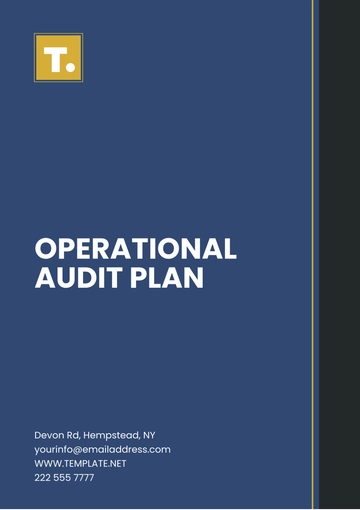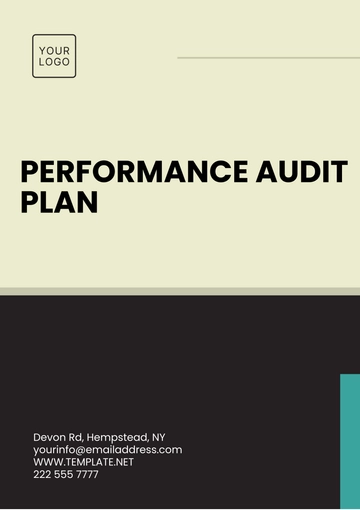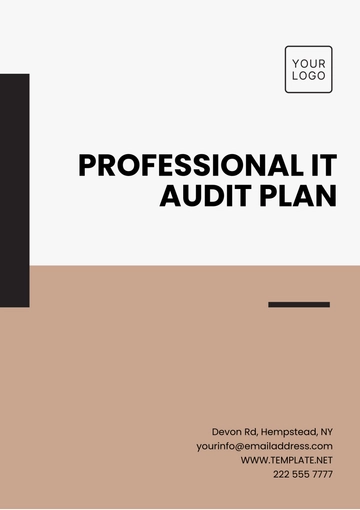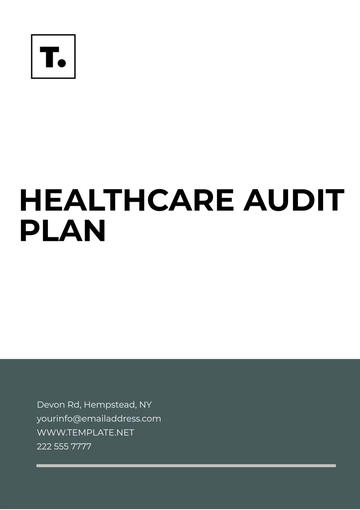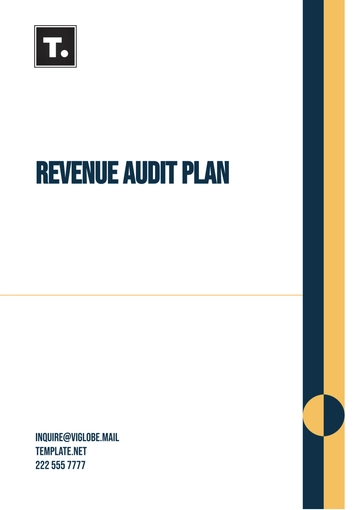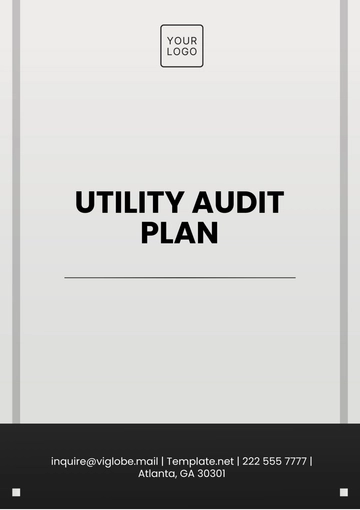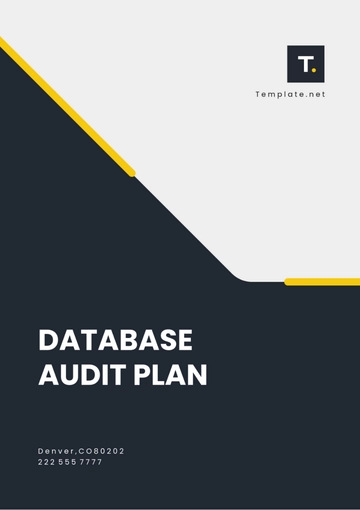Free Aesthetic Training Audit Plan

I. Introduction
The Aesthetic Training Audit Plan is designed to ensure the quality and compliance of aesthetic training programs within [Your Company Name], which specializes in aesthetic medicine and training. This plan aims to identify areas for improvement, standardize training practices, and elevate the overall quality of training provided to trainees across our facilities in New York, Los Angeles, and Miami. By aligning our training with industry best practices, we seek to enhance the skills of our trainees and improve patient outcomes.
II. Objectives
The primary objectives of the aesthetic training audit are:
Ensure Compliance: Verify adherence to industry standards and regulations set by governing bodies, such as the American Society of Aesthetic Plastic Surgery (ASAPS) and the National Medical Association (NMA).
Assess Effectiveness: Evaluate the effectiveness of training programs in imparting essential skills and knowledge to trainees, focusing on both theoretical and practical components.
Identify Improvement Areas: Pinpoint specific areas within the training curriculum and delivery that require enhancements or updates, particularly in the latest aesthetic techniques and technologies.
Standardize Practices: Develop and implement standardized training practices across all facilities to ensure consistency and quality in training delivery, facilitating a uniform experience for all trainees.
III. Scope
This audit plan covers all aspects of aesthetic training programs, including:
Curriculum: Review of course content, learning outcomes, and alignment with industry standards, focusing on modules such as injectables, laser treatments, and skin rejuvenation techniques.
Training Materials: Evaluation of the quality and relevance of training resources, including manuals, presentations, online modules, and hands-on materials.
Instructors: Assessment of instructor qualifications, teaching methodologies, industry experience, and ongoing professional development efforts.
Facilities: Examination of training environments, including the availability of necessary equipment, cleanliness, and adherence to safety standards.
IV. Methodology
Document Review
Review all relevant documents, including training manuals, curriculum outlines, and instructor qualifications.
Collect and analyze accreditation documents and certifications from all training programs.
On-Site Inspections
Conduct on-site inspections of training facilities to assess the adequacy of the environment, resources provided, and adherence to safety protocols.
Evaluate equipment and technology used during training sessions, ensuring they meet industry standards.
Interviews
Interview instructors (at least 5) to gather insights on their experiences, challenges, and feedback on the training programs.
Conduct interviews with trainees (at least 20) to understand their perceptions of training effectiveness.
Speak with administrative staff to gauge operational support for training programs.
Surveys
Distribute surveys to all trainees to collect quantitative and qualitative feedback on their training experience and perceived competency post-training.
Aim for a minimum response rate of 75% to ensure reliable data collection.
Data Analysis
Analyze gathered data using statistical methods to identify trends, gaps, and areas needing improvement.
Create visual representations (charts and graphs) to present findings.
V. Reporting
Audit Findings
Compile and document all audit findings, highlighting the strengths and weaknesses of the training programs.
Categorize findings into actionable items, with specific examples from interviews and surveys.
Recommendations
Provide actionable recommendations based on audit findings to enhance training quality and compliance, including suggested revisions to curriculum and teaching methodologies.
Follow-Up Actions
Outline a plan for follow-up actions and re-evaluation to ensure continuous improvement, including setting timelines for implementing recommendations and re-assessing programs after 6 months.
VI. Timeline
Phase | Duration |
|---|---|
Preparation | 2 Weeks |
Document Review | 1 Week |
On-Site Inspections | 2 Weeks |
Interviews & Surveys | 1 Week |
Data Analysis | 1 Week |
Reporting | 2 Weeks |
- 100% Customizable, free editor
- Access 1 Million+ Templates, photo’s & graphics
- Download or share as a template
- Click and replace photos, graphics, text, backgrounds
- Resize, crop, AI write & more
- Access advanced editor
Evaluate your aesthetic training programs effectively with Template.net's Aesthetic Training Audit Plan Template. This editable and customizable template provides a detailed structure for auditing training processes. Fully editable in our Ai Editor Tool, you can tailor it to meet your organization’s audit standards.
You may also like
- Finance Plan
- Construction Plan
- Sales Plan
- Development Plan
- Career Plan
- Budget Plan
- HR Plan
- Education Plan
- Transition Plan
- Work Plan
- Training Plan
- Communication Plan
- Operation Plan
- Health And Safety Plan
- Strategy Plan
- Professional Development Plan
- Advertising Plan
- Risk Management Plan
- Restaurant Plan
- School Plan
- Nursing Home Patient Care Plan
- Nursing Care Plan
- Plan Event
- Startup Plan
- Social Media Plan
- Staffing Plan
- Annual Plan
- Content Plan
- Payment Plan
- Implementation Plan
- Hotel Plan
- Workout Plan
- Accounting Plan
- Campaign Plan
- Essay Plan
- 30 60 90 Day Plan
- Research Plan
- Recruitment Plan
- 90 Day Plan
- Quarterly Plan
- Emergency Plan
- 5 Year Plan
- Gym Plan
- Personal Plan
- IT and Software Plan
- Treatment Plan
- Real Estate Plan
- Law Firm Plan
- Healthcare Plan
- Improvement Plan
- Media Plan
- 5 Year Business Plan
- Learning Plan
- Marketing Campaign Plan
- Travel Agency Plan
- Cleaning Services Plan
- Interior Design Plan
- Performance Plan
- PR Plan
- Birth Plan
- Life Plan
- SEO Plan
- Disaster Recovery Plan
- Continuity Plan
- Launch Plan
- Legal Plan
- Behavior Plan
- Performance Improvement Plan
- Salon Plan
- Security Plan
- Security Management Plan
- Employee Development Plan
- Quality Plan
- Service Improvement Plan
- Growth Plan
- Incident Response Plan
- Basketball Plan
- Emergency Action Plan
- Product Launch Plan
- Spa Plan
- Employee Training Plan
- Data Analysis Plan
- Employee Action Plan
- Territory Plan
- Audit Plan
- Classroom Plan
- Activity Plan
- Parenting Plan
- Care Plan
- Project Execution Plan
- Exercise Plan
- Internship Plan
- Software Development Plan
- Continuous Improvement Plan
- Leave Plan
- 90 Day Sales Plan
- Advertising Agency Plan
- Employee Transition Plan
- Smart Action Plan
- Workplace Safety Plan
- Behavior Change Plan
- Contingency Plan
- Continuity of Operations Plan
- Health Plan
- Quality Control Plan
- Self Plan
- Sports Development Plan
- Change Management Plan
- Ecommerce Plan
- Personal Financial Plan
- Process Improvement Plan
- 30-60-90 Day Sales Plan
- Crisis Management Plan
- Engagement Plan
- Execution Plan
- Pandemic Plan
- Quality Assurance Plan
- Service Continuity Plan
- Agile Project Plan
- Fundraising Plan
- Job Transition Plan
- Asset Maintenance Plan
- Maintenance Plan
- Software Test Plan
- Staff Training and Development Plan
- 3 Year Plan
- Brand Activation Plan
- Release Plan
- Resource Plan
- Risk Mitigation Plan
- Teacher Plan
- 30 60 90 Day Plan for New Manager
- Food Safety Plan
- Food Truck Plan
- Hiring Plan
- Quality Management Plan
- Wellness Plan
- Behavior Intervention Plan
- Bonus Plan
- Investment Plan
- Maternity Leave Plan
- Pandemic Response Plan
- Succession Planning
- Coaching Plan
- Configuration Management Plan
- Remote Work Plan
- Self Care Plan
- Teaching Plan
- 100-Day Plan
- HACCP Plan
- Student Plan
- Sustainability Plan
- 30 60 90 Day Plan for Interview
- Access Plan
- Site Specific Safety Plan






